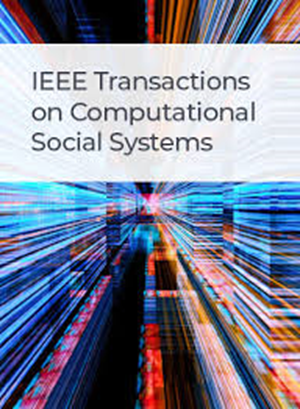The Face of Deception: The Impact of AI-Generated Photos on Malicious Social Bots
IF 4.5
2区 计算机科学
Q1 COMPUTER SCIENCE, CYBERNETICS
IEEE Transactions on Computational Social Systems
Pub Date : 2024-10-09
DOI:10.1109/TCSS.2024.3461328
引用次数: 0
Abstract
In this research, we investigate the influence of utilizing artificial intelligence (AI)-generated photographs on malicious bots that engage in disinformation, fraud, reputation manipulation, and other types of malicious activity on social networks. Our research aims to compare the performance metrics of social bots that employ AI photos with those that use other types of photographs. To accomplish this, we analyzed a dataset with 13 748 measurements of 11 423 bots from the VK social network and identified 73 cases where bots employed generative adversarial network (GAN)-photos and 84 cases where bots employed diffusion or transformers photos. We conducted a qualitative comparison of these bots using metrics such as price, survival rate, quality, speed, and human trust. Our study findings indicate that bots that use AI-photos exhibit less danger and lower levels of sophistication compared to other types: AI-enhanced bots are less expensive, less popular on exchange platforms, of inferior quality, less likely to be operated by humans, and, as a consequence, faster and more susceptible to being blocked by social networks. We also did not observe any significant difference between GAN-based and diffusion/transformers-based bots, indicating that diffusion/transformers models did not contribute to increased bot sophistication compared to GAN models. Our contributions include a proposed methodology for evaluating the impact of photos on bot sophistication, along with a publicly available dataset for other researchers to study and analyze bots. Our research findings suggest a contradiction to theoretical expectations: in practice, bots using AI-generated photos pose less danger.欺骗的面孔:人工智能生成的照片对恶意社交机器人的影响
在本研究中,我们调查了利用人工智能(AI)生成的照片对恶意机器人的影响,这些恶意机器人在社交网络上从事虚假信息、欺诈、声誉操纵和其他类型的恶意活动。我们的研究旨在比较使用人工智能照片的社交机器人与使用其他类型照片的社交机器人的性能指标。为了实现这一目标,我们分析了来自VK社交网络的11423个机器人的13748个测量数据集,并确定了73个机器人使用生成对抗网络(GAN)照片的情况,84个机器人使用扩散或变形照片的情况。我们使用价格、存活率、质量、速度和人类信任等指标对这些机器人进行了定性比较。我们的研究结果表明,与其他类型的机器人相比,使用人工智能照片的机器人表现出更低的危险和更低的复杂程度:人工智能增强的机器人更便宜,在交易平台上不那么受欢迎,质量较差,不太可能由人类操作,因此,速度更快,更容易被社交网络屏蔽。我们也没有观察到基于GAN的机器人和基于扩散/变压器的机器人之间有任何显著差异,这表明与GAN模型相比,扩散/变压器模型并没有提高机器人的复杂性。我们的贡献包括提出一种评估照片对机器人复杂性影响的方法,以及一个可供其他研究人员研究和分析机器人的公开数据集。我们的研究结果与理论预期相矛盾:在实践中,使用人工智能生成的照片的机器人构成的危险较小。
本文章由计算机程序翻译,如有差异,请以英文原文为准。
求助全文
约1分钟内获得全文
求助全文
来源期刊

IEEE Transactions on Computational Social Systems
Social Sciences-Social Sciences (miscellaneous)
CiteScore
10.00
自引率
20.00%
发文量
316
期刊介绍:
IEEE Transactions on Computational Social Systems focuses on such topics as modeling, simulation, analysis and understanding of social systems from the quantitative and/or computational perspective. "Systems" include man-man, man-machine and machine-machine organizations and adversarial situations as well as social media structures and their dynamics. More specifically, the proposed transactions publishes articles on modeling the dynamics of social systems, methodologies for incorporating and representing socio-cultural and behavioral aspects in computational modeling, analysis of social system behavior and structure, and paradigms for social systems modeling and simulation. The journal also features articles on social network dynamics, social intelligence and cognition, social systems design and architectures, socio-cultural modeling and representation, and computational behavior modeling, and their applications.
 求助内容:
求助内容: 应助结果提醒方式:
应助结果提醒方式:


